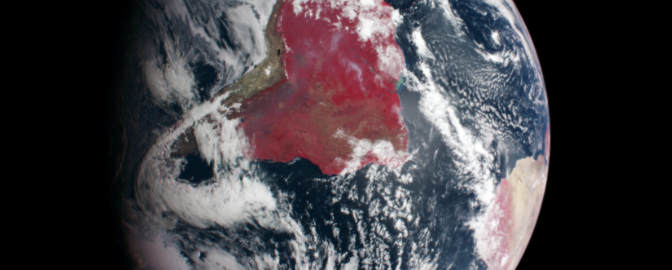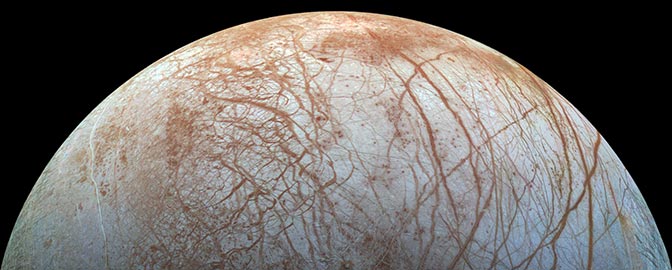A possible sign of life on K2-18b? Here’s what it means — and why it's just the beginning

Written by
Asa Stahl, PhD
Science Editor, The Planetary Society
April 18, 2025
In what a team of researchers claim is our strongest hint yet that we're not alone in the Universe, scientists may have detected dimethyl sulfide — a chemical almost uniquely associated with life on Earth — in the atmosphere of another planet. If the evidence holds up, this would mean that a world more than 100 light-years away hosts a substance that, on Earth, only exists because of plants and microbes.
Before this can be called a discovery, many questions have to be answered first. Scientists must confirm if the signal is real and if it truly indicates the presence of life, confronting lots of possible alternatives along the way. But no matter what the truth turns out to be, these first hints mark a new era in how we search for life beyond the Solar System.
A possible signal
Using the James Webb Space Telescope (JWST), a team of researchers has peered into the atmosphere of a planet called K2-18 b as it passed in front of its star. This technique, called transmission spectroscopy, allows scientists to puzzle out the contents of a planet’s atmosphere by seeing how light gets absorbed by its gases on the way toward us. In this case, the researchers found signatures that appear to be best explained by a chemical called dimethyl sulfide (DMS), or its cousin dimethyl disulfide (DMDS), or possibly both.

Astrobiologists have long had these molecules on their “Most Wanted” lists. On Earth, DMS is only known to exist because of life, with certain plants and marine microbes producing a chemical that breaks down into DMS over time. This makes DMS a remarkably specific sign of life, one that’s much harder to explain any other way.
The discovery of DMS in the atmosphere of K2-18 b would be an extremely tantalizing find. It may even become the strongest sign of life discovered beyond the Solar System, ever. Though telescopes have looked into the atmospheres of faraway planets before, they have never found a substance that, on Earth, is only associated with life.
For K2-18 b in particular, the discovery of DMS would crown an ongoing narrative that the team behind the new results has been championing for years. According to the group, which is led by Nikku Madhusudhan, PhD, at the University of Cambridge, K2-18 b represents a new kind of world: one completely covered in ocean.
The JWST results, if true, could mean those oceans are teeming with life.

Hycean worlds
Since its discovery in 2015 by the Kepler spacecraft, K2-18 b has become famous as the poster child for a hypothetical category of planets called “Hycean” worlds. These planets would be larger than Earth but smaller than Neptune, with thin atmospheres of hydrogen and surfaces completely covered in ocean. The term “Hycean” sums this up by combining “hydrogen” and “ocean.”
Scientists have argued for years about whether Hycean worlds actually exist, and K2-18 b has been at the center of that debate. On the one hand, K2-18 b orbits within the habitable zone of its star (a cool red dwarf about 120 light-years away), meaning it could potentially host water on its surface. On the other hand, alternate conceptions of the planet — like that it hosts a thicker atmosphere over a layer of molten rock, called a “magma ocean” — may also explain what we see of the world.
Madhusudhan’s team pointed JWST at K2-18 b in hopes of settling the argument. If the DMS signal they've found is real, then K2-18 b may truly be a Hycean world. But to get to the bottom of the issue and come anywhere close to the discovery of alien life on this planet, researchers will have to answer many questions first.
Proving the signal
First, scientists have to consider the possibility that the DMS signal is not actually real. The reported detections of phosphine on Venus were exciting headlines in 2020, for example, but were not successfully reproduced by others. Independent teams of scientists will be checking this work in the same way, doing their own analyses of the data to see if they get the same results.
In the case of K2-18 b, there are reasons to remain cautious. Two years ago, Madhusudhan’s team published findings from a different set of measurements of K2-18b, taken by JWST at different wavelengths. They found both methane and carbon dioxide were present in the planet’s atmosphere, along with a very tentative hint of DMS.
However, a recent analysis of that same data by another research group found no significant evidence of carbon dioxide or DMS in the data at all. This is especially concerning because the new DMS detection has been described with roughly the same amount of statistical confidence as the earlier carbon dioxide detection that has now been called into question. That doesn’t mean these signals aren’t real — only that the jury is still out.

Ruling out everything but aliens
At the same time, researchers will look into whether some chemical besides DMS (or DMDS) could make the signal we see from K2-18 b. They’ll also explore whether there are ways to explain DMS in a planet’s atmosphere without alien life.
Signals from K2-18 b have been misidentified before. Years ago, researchers peered into the planet’s atmosphere using the Hubble Space Telescope and found signs of water vapor, which bolstered hopes of oceans. Yet it later turned out that those signals were actually caused by methane. Since decoding the atmosphere of a faraway planet is a complicated task, scientists are still working out the best ways to avoid this kind of mistake.
At the same time, DMS may be present on K2-18 b but not be a sign of life. Though this compound is only seen on Earth because of life, K2-18 b isn’t Earth. There might be some chemical process on this alien world that could produce DMS, even in the absence of life.
There are reasons to think that’s possible. Over the past couple of years, scientists have found trace amounts of DMS in comets and in the space between stars. It may be unlikely that whatever leads to these tiny bits of DMS could account for the concentrations reported on K2-18 b, which are about 100,000 times higher. But these discoveries show that nature can make DMS without life.

A milestone in the search for life
It’ll take time to figure all this out. Different teams will do their own investigations, collect more data, learn more about how DMS might be produced, and better understand how it might show up in a planet’s atmosphere. Only then will we have a chance at the full story.
“Searching for life beyond Earth is one of the great, profound pursuits of humankind. But any claim of life out there will require thorough study by the scientific community as a whole before we have confidence in the results,” said Bruce Betts, PhD, chief scientist at The Planetary Society.
No matter what, this tentative discovery marks a new era in how we search for life. JWST was launched with hopes of doing exactly this sort of science (among other things), and now it’s living up to that promise. Peering into the atmospheres of faraway planets to look for things like DMS could be our best bet for discovering alien life, and JWST is only getting started.
The search for life is under threat
Just as NASA’s flagship telescope is enabling breakthroughs, the search for life is falling under threat. Last week, a proposal from within the White House slated a nearly 50% cut to NASA science that would eviscerate space research and halt the development of nearly every future science project at the agency, in what our chief of space policy described as an “extinction-level” event. If these cuts go forward, they would undermine the search for life just as we’re becoming capable of the sort of astonishing discovery that might answer our most fundamental question: Are we alone?
If you want to see a future for NASA science and the search for life, send a message through our Advocacy Action Center.
Support our core enterprises
Your gift today will go far to help us close out the year strong and keep up our momentum in 2026.
Donate

 Explore Worlds
Explore Worlds Find Life
Find Life Defend Earth
Defend Earth


